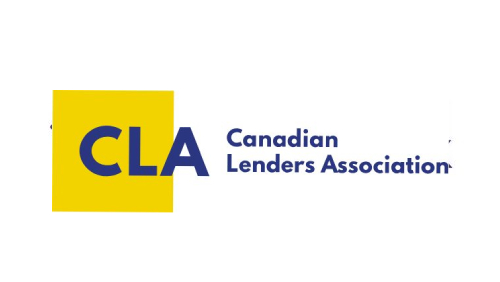A Case for Clarity in the Repair and Storage Liens Act (RSLA)
Abstract: Differentiating between essential and non-essential car repairs is a critical step in modernizing Ontario’s Repair and Storage Liens Act (RSLA). Essential repairs, such as brake and engine work, ensure vehicle safety and functionality, while non-essential enhancements, like custom paint jobs and luxury upgrades, add no operational value yet inflate lien claims. The Canadian Lenders Association (CLA) advocates for legislative clarity to prioritize essential repairs, eliminate abuse, and protect consumers and lenders from excessive financial burdens. By reforming the RSLA, Ontario can establish fairness, transparency, and trust within the automotive financing ecosystem.
The automotive industry is a critical pillar of Canada’s economy, with financing playing an integral role in ensuring vehicle affordability and accessibility. Gaps in the current RSLA framework have led to situations where lenders and borrowers alike face unintended and unreasonable financial risks. By further clarifying sections of the RSLA, Ontario has an opportunity to modernize its regulations, protect consumers, and ensure a level playing field for financial stakeholders.
Why the Distinction Matters
Under the current framework, all repairs—whether essential for safety or cosmetic enhancements—are treated equally when determining lien amounts. This lack of nuance leads to inflated lien claims, allowing repair facilities to include the cost of non-essential or vanity improvements, often without the informed consent of borrowers or acknowledgment from lenders.
This unfair burden affects not just borrowers but also lenders, who may face excessive claims on vehicles used as collateral. By modernizing the RSLA to prioritize essential repairs over non-essential enhancements, Ontario can protect consumer interests and establish transparency in automotive financing.
Defining Essential and Non-Essential Repairs
Essential Repairs are those that directly impact the safety, operation, and legal compliance of a vehicle. These repairs are vital to ensuring the vehicle remains roadworthy and functional. Examples include:
- Engine Repairs: Timing belt or chain replacements, oil changes, and cooling system repairs.
- Brake System Repairs: Replacing brake pads, fluid flushes, and line repairs.
- Transmission Repairs: Rebuilding or replacing the transmission, clutch replacements.
- Safety and Legal Compliance: Headlight replacements, windshield wiper repairs, airbag systems, and rustproofing.
Without these repairs, vehicles may become unsafe or non-compliant, creating liability concerns for borrowers and lenders alike.
Non-Essential Repairs, by contrast, are enhancements or cosmetic upgrades that do not affect the basic functionality or safety of a vehicle. These include:
- Exterior Enhancements: Custom paint jobs, vanity vinyl wraps, and spoilers.
- Interior Customizations: Upgraded upholstery, ambient lighting, or luxury dashboards.
- Performance Upgrades: Aftermarket exhaust systems, suspension lowering kits, or turbochargers.
These repairs, while desirable to some, offer no value in making the vehicle operational or roadworthy. Including their cost in lien claims leads to unnecessary disputes and financial strain.
Reforming the RSLA for Transparency
The CLA advocates for clear amendments to the RSLA to codify the distinction between essential and non-essential repairs. These updates would:
- Establish a Regulatory Framework: Define essential and non-essential repairs in law, ensuring lien claims are based only on repairs necessary for the vehicle’s safe operation and legal compliance.
- Prevent Abuse: Eliminate the inclusion of unnecessary, non-consensual enhancements in lien amounts.
- Protect Consumers and Lenders: Reduce disputes and financial strain caused by inflated liens while allowing repair facilities to focus on core services.
Supporting Responsible Lending
The CLA supports reforms that ensure consumer protection without compromising the operational needs of repair facilities. Differentiating repair classifications fosters trust and collaboration across all parties—borrowers, lenders, and service providers.
Through collaboration and clarity, Ontario can create a modernized RSLA that benefits all stakeholders and strengthens the automotive financing ecosystem. It’s time to bring fairness back to the garage.
Here are the 5 main points:
-
The RSLA’s Current Framework is Outdated and Risky
The existing Repair and Storage Liens Act (RSLA) treats all vehicle repairs equally, creating financial risks for both borrowers and lenders by allowing liens for non-essential or cosmetic work. -
Essential vs. Non-Essential Repairs Must Be Distinguished
Essential repairs affect vehicle safety and legal compliance (e.g., engine, brakes, transmission), while non-essential upgrades (e.g., custom paint, luxury interiors) do not impact roadworthiness. -
Inflated Liens Harm Borrowers and Lenders
Repair facilities can include non-essential work in lien claims, often without borrower consent, leading to excessive costs and disputes that jeopardize vehicle financing arrangements. -
Regulatory Reform Can Improve Transparency and Fairness
The CLA proposes amending the RSLA to legally define essential vs. non-essential repairs and restrict lien claims to only necessary work, preventing abuse and financial strain. -
Modernizing the RSLA Supports Responsible Lending and Consumer Protection
A reformed RSLA would balance the needs of borrowers, lenders, and repair shops—ensuring fairness, fostering collaboration, and protecting consumers in the auto finance system.
Sign up for our 2025 Summit Series



